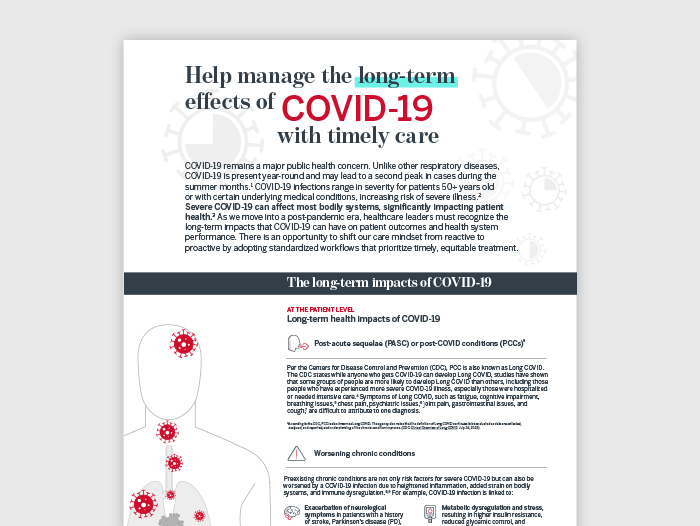Auto logout in seconds.
Continue LogoutWhen BA.2.86 first emerged, many health experts were concerned it could lead to a new surge in COVID-19 cases. And while new laboratory research suggests it may be less dangerous than initially predicted, the same may not be true for the variants that come after it.
BA.2.86 may not be as dangerous as originally feared
In August, the World Health Organization and CDC began monitoring a new omicron subvariant BA.2.86, nicknamed "Pirola." As of Sept. 1, there were 33 cases attributed to BA.2.86 across several countries, including the United States. In the United States, BA.2.86 cases have been detected in Michigan, New York, Ohio, Texas, and Virginia.
When it first emerged, many health experts were concerned about BA.2.86's potential to evade immunity from past vaccinations and infections. Compared to other circulating variants, BA.2.86 has more than 30 mutations to its spike protein, an area that is targeted by antibodies.
"When something heavily mutated comes out of nowhere ... there's this risk that it's dramatically different and that it changes the nature of the pandemic," said Benjamin Murrell, a researcher at the Karolinska Institute in Sweden.
However, four new preliminary laboratory studies suggest BA.2.86 is less immune-evasive than health experts initially predicted. All four studies used pseudoviruses to test the variant against blood samples.
In one study, researchers from the Biomedical Innovation Center at Peking University in China tested BA.2.86 using blood samples from vaccinated mice and vaccinated and recently infected people. The researchers found that there was a slight twofold decline in immunity from vaccination and recent infection against BA.2.86 compared to XBB.1.5. On the other hand, BA.2.86 was also about 60% less infectious than XBB.1.5 viruses.
In a separate study, researchers from the Karolinska Institute tested BA.2.86 against blood samples from individuals that were collected at two different time points: late 2022, before the XBB variant emerged, and late August. Although the older blood samples were not as effective against BA.2.86, the more recent samples were able to neutralize the virus.
Another study from researchers at Beth Israel Deaconess Medical Center tested BA.2.86 against blood samples from 66 individuals who had either received a monovalent vaccine, a bivalent vaccine, or recently recovered from an XBB infection. Overall, the researchers found that people were able to neutralize BA.2.86 as effectively, or sometimes more effectively, than other circulating omicron subvariants. Individuals who recently recovered from an XBB infection had the highest neutralizing antibodies.
A separate study from researchers at Columbia University also found largely similar results, with different types of antibodies recognizing BA.2.86 just as well as other circulating subvariants. Individuals who had recent XBB infections also had the highest immunity against BA.2.86 in this study.
"For BA.2.86 the initial antibody neutralization results suggest that history is not repeating itself here," said Murrell, who led the Karolinska Institute study . "Its degree of antibody evasion is quite similar to recently circulating variants. It seems unlikely that this will be a seismic shift for the pandemic."
"BA.2.86 actually poses either similar or less of an immune escape risk compared with currently circulating variants, not more," said Dan Barouch, who conducted the study at Beth Israel. "So that is good news. It does bode well for the vaccine."
Updated COVID-19 shots should protect against BA.2.86
Preliminary data from drug manufacturers suggest that their updated COVID-19 vaccines are effective against BA.2.86.
On Wednesday, Moderna released new data showing that its updated vaccine led to an 8.7-fold increase in protective antibodies against BA.2.86. "Taken together with our previously communicated results showing a similarly effective response against EG.5 and FL.1.5.1 variants, these data confirm that our updated COVID-19 vaccine will continue to be an important tool for protection as we head into the fall vaccination season," said Moderna president Stephen Hoge.
Separately, Pfizer on Wednesday reported that its updated COVID-19 vaccine generated a strong antibody response against several omicron variants, including BA.2.86, in a preclinical trial.
"It's reassuring that this is not a variant that's going to pose a huge problem for our soon-to-be-released vaccines," said David Ho, who led the study at Columbia University. "At least from this perspective, it's not as threatening as feared."
What's next after BA.2.86?
Although BA.2.86 appears to be less dangerous than initially predicted, the same may not be true for the variants that come after it.
"I'm more worried about its descendants," said Ryan Gregory, a biology professor at the University of Guelph in Canada. "It's a potential BA.2.86.1.5 that concerns me."
"Even if Pirola (BA.2.86) itself doesn't cause mass casualties, we don't want it as the new starting point for further evolution as the dominant variant," Gregory said.
Multiple subgroups of BA.2.86 may already be forming, and some of these subgroups may be more immune-evasive or transmissible. "There is a reasonable chance it quickly optimizes and gains back some of that transmission ability," said Jay Weiland, a leading COVID-19 modeler.
Right now, "[i]t's time to close watch BA.2.86's next steps," said Raj Rajnarayanan—assistant dean of research and associate professor at the New York Institute of Technology campus in Arkansas. (Goodman, CNN, 9/4; Carbajal, Becker's Clinical Leadership, 9/1; Prater, Fortune, 9/1; Stein, "Shots," NPR, 9/5; Lovelace Jr., NBC News, 9/6; Constantino, CNBC, 9/7)
To help hospital leadership teams pressure test the comprehensiveness of their response and check for blind spots, we created this scenario planning guide in collaboration with health systems and internal experts.
Don't miss out on the latest Advisory Board insights
Create your free account to access 1 resource, including the latest research and webinars.
Want access without creating an account?
You have 1 free members-only resource remaining this month.
1 free members-only resources remaining
1 free members-only resources remaining
You've reached your limit of free insights
Become a member to access all of Advisory Board's resources, events, and experts
Never miss out on the latest innovative health care content tailored to you.
Benefits include:
You've reached your limit of free insights
Become a member to access all of Advisory Board's resources, events, and experts
Never miss out on the latest innovative health care content tailored to you.
Benefits include:
This content is available through your Curated Research partnership with Advisory Board. Click on ‘view this resource’ to read the full piece
Email ask@advisory.com to learn more
Click on ‘Become a Member’ to learn about the benefits of a Full-Access partnership with Advisory Board
Never miss out on the latest innovative health care content tailored to you.
Benefits Include:
This is for members only. Learn more.
Click on ‘Become a Member’ to learn about the benefits of a Full-Access partnership with Advisory Board
Never miss out on the latest innovative health care content tailored to you.


